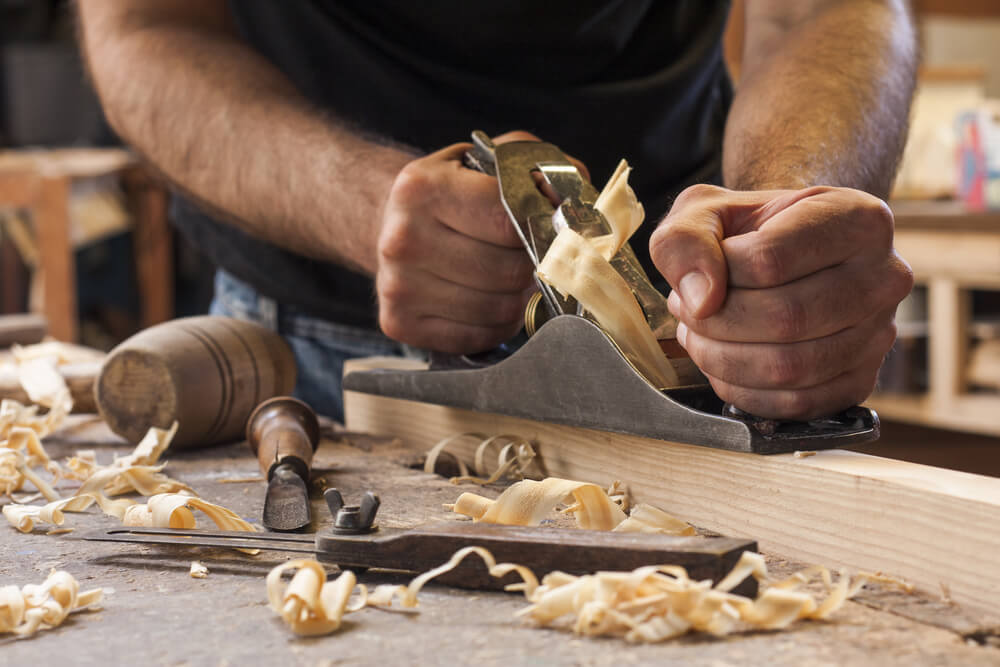
If you've ever wondered what a belt sander is, this article will help you. Here you'll find tips on a firm grip, selecting a fine abrasive belt, and Precautions to keep in mind. The first thing you need to know is how to use the machine safely. If you aren't familiar with how to use the belt sander correctly, it could cause serious injuries.
Maintain a firm grip with a belt sander
Before you operate a belt sander make sure it is switched off and has the correct sanding material. Start by aligning the front pulley with the screw to adjust the belt. Be sure to maintain good balance while operating the belt sander. Make frequent adjustments to the belt tracking. This will ensure that the belt sander performs at its best.

Abrasive belts of high quality
Abrasive belts can be rolled sheets of abrasive-paper attached to joints. They are angled between 45° and 80° from the running direction. This avoids abrupt transitions at the belt's junction. Choosing a fine abrasive belt can make a big difference in your production speed. You can also choose between a range of different weights.
Avoid Sandpaper Buildup
Use sanders with the correct grit and avoid over-loading. This will help avoid sandpaper accumulation. This is vital as overloaded machines or high removal rates can result in burned belts. Dust buildup on the workpiece can cause premature wear.
Use a belt sander with care
Use safety precautions whenever you use a belt grinder. Eye protection is essential. You should always remove dust from metal surfaces before you use the sander. To prevent hearing damage, the belt sander can cause serious problems. Wearing earplugs and a shield to your face can protect your eyes. Protect your hearing by wearing work gloves, long pants, and dust mask.

Getting better results with a belt sander
You can achieve better results with a belt-sander than ever before. However, there are some things that you should do before you begin sanding. First, choose your stance. While you are holding the sander, you should make sure that the front of the tool is clear of debris. Then, turn the machine on and place the stock against the sander belt. Next, sand along with the grain.
FAQ
How do I know what tools are best suited for me?
It's important that you consider your needs and preferences while shopping for tools. What do you prefer: metal or plastic handles? What size are you most comfortable using for screws and nails? Do you prefer hand tools over power tools?
Can I succeed in woodworking if I'm a genius?
No. It is not rocket science to woodwork. Anyone can learn to use basic powertools and techniques to create beautiful work of art.
What material would you recommend to start learning woodworking?
You can start with softwoods like pine or poplar. Once you feel comfortable with these two, move on to hardwood.
Where can you buy your woodworking materials?
There are many places that you can find all the information you need. You can visit your local hardware stores, or you can look online at sites like Amazon.com.
You might also consider flea markets and garage sale for any old furniture or other materials you could reuse.
What tools do I need to start as a woodworker and what should I learn?
Woodworking is an art that takes patience and practice. It takes time to master all the tools and techniques involved in woodworking.
There are many woodworking tools on the current market. Some prefer to use power tools and others prefer hand tools.
Your choice, however, is up to you. However, you need to ensure that the tool you use is the right one for the job. It may be a good idea to start with a basic set, if possible, if you don’t know much about hand tools.
You might also want to learn how a router works, which allows you to cut wood into intricate shapes. These routers can be purchased at most hardware and home improvement stores.
Statistics
- If your lumber isn't as dry as you would like when you purchase it (over 22% in Glen Huey's opinion…probably over 10-15% in my opinion), then it's a good idea to let it acclimate to your workshop for a couple of weeks. (woodandshop.com)
- Overall employment of woodworkers is projected to grow 8 percent from 2020 to 2030, about as fast as the average for all occupations. (bls.gov)
- Most woodworkers agree that lumber moisture needs to be under 10% for building furniture. (woodandshop.com)
- The best-paid 10 percent make $76,000, while the lowest-paid 10 percent make $34,000. (zippia.com)
External Links
How To
How to join wooden boards without using nails
Woodworking is a popular hobby. Woodworking can be a fun hobby because you can work with your hands to make useful objects from wood. You may need to join two pieces without the use of nails. This article will help you to maintain the beauty of your woodwork projects.
First, remove any sharp edges from the wood pieces before you join them. You don't want to leave sharp corners that could cause problems later on down the road. Once you have done that, you can begin gluing your boards together.
When working with hardwood, glue should be applied only to one side. If you're using softwoods like pine or cedar, you should put glue on both sides. Once you have applied the glue, press down on the boards until they are fully attached. Be sure to let the glue dry before you move on to the next step.
After you have glued your boards, drill holes where you want to insert screws. These holes will differ depending on the type and size of screw you are using. If you plan to use a 1/2 inch wood screw, drill a hole at least 3/4 inches in depth.
Once you've drilled your holes, you'll want to drive the screws through the joint and into the backside of the board. You should be careful not to touch the board's front surface. This could cause damage. Try to not hit the ends of the screws when driving the screws. This will avoid splitting in the wood's ends grain.
Protect your finished project now. You can either seal the entire piece of furniture or cover the top. You want it to last years, so you can use any product. You can choose from oil-based varnishes or polyurethane, shellac and lacquer as examples.
These products can be found in most home improvement shops. It is important to ensure that you purchase the correct product for the job. Some finishes are toxic and should not ever be used indoors. When handling certain finishes, wear protective gear.